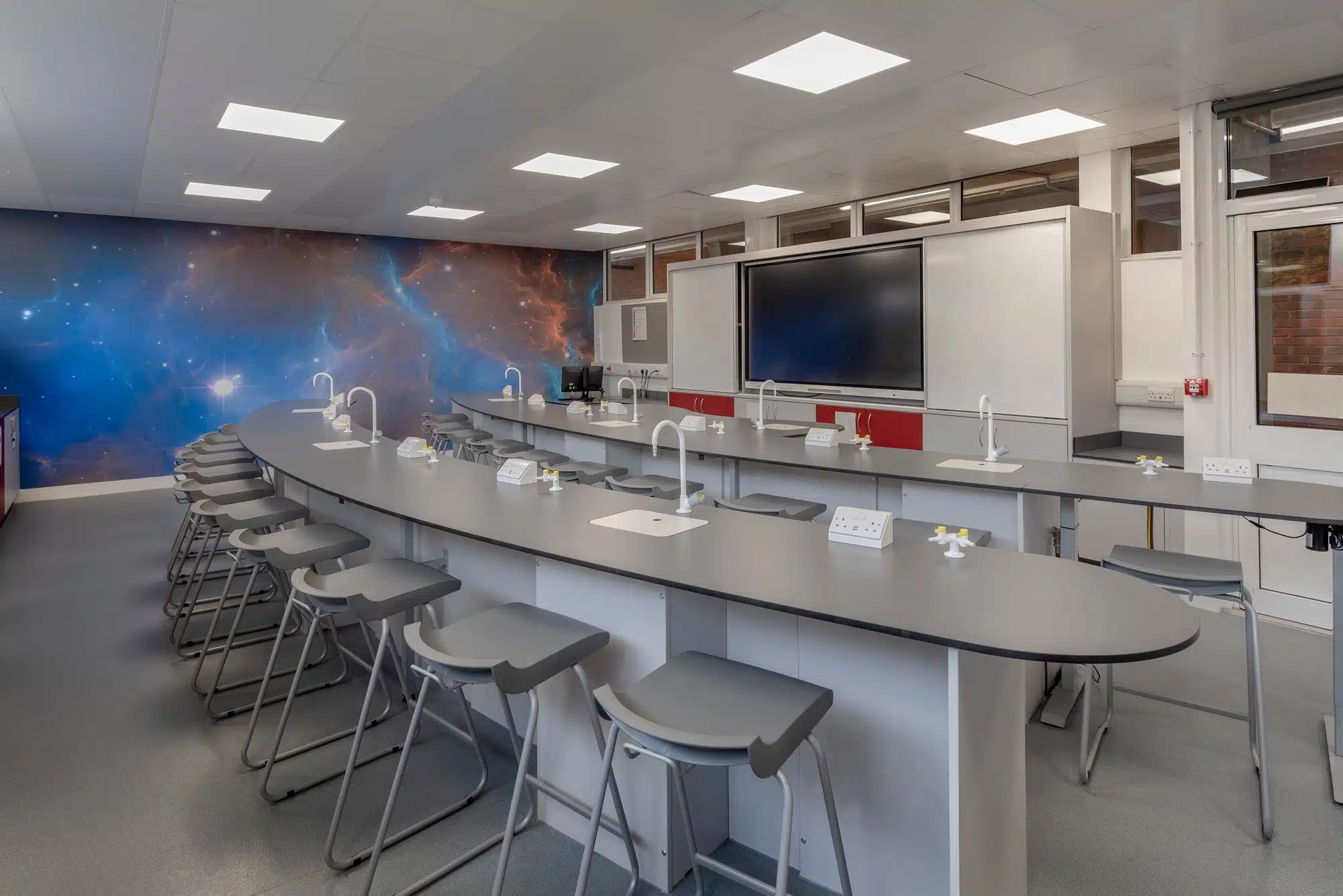The Role of Furniture in Promoting Inclusive Education
Sep 26, 2024 • 4 minutes

For many years, traditional classroom layouts, with rows of desks facing a blackboard, followed a one-size-fits-all approach to education. These setups, while functional in their time, did not fully support every child’s unique learning journey.
Thankfully, modern classrooms have evolved. They are designed to accommodate students of all abilities and learning styles, creating spaces that are flexible, inclusive and adaptive to individual needs.
Here at Westcountry Group, we are passionate about transforming classrooms into places where every child can learn without limitation. In this article, we will explore how thoughtful furniture design is essential for promoting inclusive education and creating spaces where all students feel supported and empowered to reach their full potential.
Why is Inclusive Education Important?
Inclusive education ensures that all students, regardless of their abilities, backgrounds or learning needs, can learn and participate together in the same environment. When classrooms embrace inclusivity, students are given the chance to learn not just from the curriculum, but from each other. They develop invaluable life skills, such as empathy, cooperation and respect for diverse perspectives. By accommodating a wide range of learning styles and abilities, schools become dynamic spaces where every child can thrive academically, socially and emotionally.
However, achieving true inclusivity goes beyond thoughtful teaching methods and positive attitudes. It must also extend into the physical environment. The design and layout of learning spaces play a crucial role in removing barriers and ensuring that all students feel supported and able to engage fully.
So, how can we create these inclusive spaces through design?
Ergonomic Classroom Furniture for Comfort and Focus
One of the key aspects of inclusive education is ensuring that every child feels comfortable in their learning environment, and this begins with the right furniture. Since students spend a significant portion of their day seated, appropriately sized desks and chairs are essential for reducing muscle strain and providing the physical support needed throughout the day.
Chairs available in various heights and with lumbar support allow students to position themselves correctly, promoting proper posture and reducing the risk of back discomfort. In addition, chairs with swivel bases offer gentle movement, which can help students who may need more physical activity during the day stay engaged while they learn. By offering this level of comfort, students can remain focused and attentive, free from the distractions of discomfort or poor posture.
Flexible Learning Spaces for Diverse Learning Styles
No two students learn the same way. Some work best independently, others thrive in group discussions and many benefit from hands-on activities. To accommodate these varied needs, classrooms themselves must be adaptable and flexible.
Modular furniture like folding partition walls, mobile desks and lightweight, stackable chairs allows teachers to create temporary, well-defined learning spaces within the classroom. This setup is ideal for activity-based and hands-on learning, where different areas of the room can be used for distinct purposes. For example, partition walls can easily form small group workspaces or quiet reading nooks without completely separating students from the larger classroom environment. These temporary spaces give students the freedom to engage with lessons in ways that best suit their individual needs while still feeling part of the overall class.
Accessible Furniture for Students with Physical Disabilities
Creating an inclusive classroom means ensuring that all students, including those with physical disabilities, can learn without barriers. Accessible furniture, such as height-adjustable desks with open leg space, allows wheelchairs to fit comfortably underneath, ensuring that every student can interact meaningfully with their peers and teachers.
Thoughtful additions like easy-to-reach or mobile storage units provide further support for students with mobility challenges, allowing them to keep essential materials close by. These features promote independence by reducing the need for assistance, empowering them to take control of their learning experience. By incorporating accessible and considerate furniture solutions, classrooms can become environments where students with physical disabilities are able to actively participate and thrive in their education.
Sensory-Friendly Zones with Calming Furniture
In an inclusive classroom, it is important to recognise that some students may become overwhelmed by the noise and activity of a busy learning environment. For students with sensory sensitivities or those who experience anxiety, having a quiet space to retreat to can make all the difference.
Designated calming corners furnished with soft seating, dim lighting and soothing textures provide a safe and comfortable space where students can take a break, self-regulate and return to the classroom feeling more focused and calm. These sensory-friendly zones ensure that all students have the opportunity to participate fully in their education, even when they need time away from more stimulating group activities.
Creating Learning Spaces that Inspire with Westcountry Group
At Westcountry Group, we believe that every student deserves a learning environment where they feel supported and empowered to succeed. With over 45 years of experience in designing educational spaces, we are dedicated to improving learning outcomes for children of all abilities. Here is what teachers and staff had to say about our work.
Contact Westcountry Group today to discuss how we can help transform your classroom — call 0330 030 0330, email: sales@westcountrygroup.com or visit our website.






